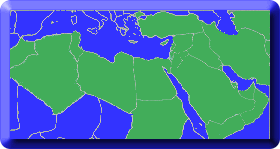
Topics in Middle Eastern and North African Economies
Document Type
Article
Publication Date
10-1-2022
Journal Title
Journal of International Financial Markets, Institutions and Money
Volume
82
Publisher
Elsevier
Abstract
This study examines the financial connectedness and risk transmission among MENA economies by accounting for financial connectedness in the short and long run as well dependency under extreme market conditions and network graph analysis. To this end, Composite Financial Stress Indices are constructed for 11 MENA countries. In addition, a battery of econometric models is applied including the standard spillover approach, the frequency domain method, the quantile connectedness technique, and connectedness networks analysis. Using daily data over the period from June 30, 2006 to June 30, 2021, the empirical results show a positive and strong association between financial stress co-movements and spillovers in those MENA countries, particularly during the long run and high extreme stress periods. Furthermore, the five Gulf countries are strongly financially connected among themselves than with the other countries. Contrary, to Tunisia, Saudi Arabia is the main financial stress and risk transmitter to other MENA economies whereas, the North African countries are relatively mild receivers of risk. Finally, the more open countries in terms of capital controls, particularly Kuwait, Oman, Qatar, and UAE seem to play a more central role in financial connectedness and risk spillovers.
Recommended Citation
Balcilar, Mehmet; Elsayed, Ahmed H.; and Hammoudeh, Shawkat, "Financial connectedness and risk transmission among MENA countries: Evidence from connectedness network and clustering analysis". Topics in Middle Eastern and North African Economies, electronic journal, 82, Elsevier, 2022, http://www.luc.edu/orgs/meea/
Creative Commons License

This work is licensed under a Creative Commons Attribution-Noncommercial-No Derivative Works 3.0 License.
Copyright Statement
© The Author(s), 2022



Comments
Presentation of the articles in the Topics in Middle Eastern and North African Economies was made possible by a limited license granted to Loyola University Chicago and Middle East Economics Association from the authors who have retained all copyrights in the articles.